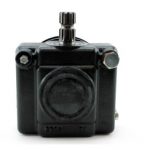LawnEQ is a trusted source for genuine OEM Parts- Shop for the part you need from your favorite manufacturers such as Landpride, Toro, Kubota, and more today on our OEM Parts Lookup Tool!
Homeowners walking to their car to start their journey to work fear the day that they will notice dried out patches or circles on their lawn. These are signs that there may be a disease festering in the grass.
Preventing diseases and ensuring a healthy lawn can only be achieved with proper maintenance. According to the University of California in Davis, each square foot of a lawn includes about 500 to 1,000 individual plants. Each plant requires just the right amount of water and fertilizer, proper lawn mower cutting, and aerated, well-drained soil. If any of these components are absent or overindulged, the turf could suffer stress and become vulnerable to a disease.
The disease will manifest if there is a disease-causing pathogen, the environment is favorable, or there is grass that is vulnerable. All three elements, known as the “disease triangle” must be present at the same time for the disease to take root on the lawn.
The objective of keeping your lawn disease-free depends on assuring that just one side of the triangle is unfavorable to the disease.
That means using the proper turf grass species that can handle the local climate and proper maintenance of the turf should assure that if a disease strikes, it is short-lived.
Varieties of grasses that do well at daytime temperatures between 70°F to 85°F include bluegrasses, fescues, and ryegrasses; warm season grasses that do well in temperatures between 80°F to 95°F include Bermuda grass, seashore paspalum, St. Augustine grass, and zoysiagrass. Grasses are most vulnerable when they aren’t actively growing. Bluegrass, fescues, and ryegrasses are most susceptible to disease in the summer; Bermuda grass, seashore paspalum, St. Augustine grass, and Zoysiagrass are most susceptible in late fall through early spring.
Experts on grass maintenance like the University of California in Davis suggest that you be vigilante when it comes to your lawn’s health. They suggest that you inspect your lawn once a week to catch a possible problem so that you can act quickly to diagnose it and prevent it from becoming more serious.
Knowing the signs that your lawn may be in the clutches of a disease is essential. University of California in Davis notes that diseases start off as small patches or spots of dying grass that spreads over time. If the attack is sudden and acute, then the cause may be insects, pathogens, weeds, or environmental stress such as too much or too little moisture or fertilizer. These problems can cause symptoms similar to a disease, but are caused by improper watering or mowing, dog urine, herbicides and other chemicals, bad drainage, compaction, insect damage, extremely high or low temperatures, other vegetation, or thatch build up.
Improper watering is the most common cause of discolored lawns. Something known as the “catch can test” can help determine how much water to feed your lawn, which may be all that is needed to alleviate your problem.
Providing your lawn with the proper amount and nutrient-balance of fertilizer, proper mowing technique and soil cultivation, and thatch removal are also essential.
A very interesting article titled Lawn Diseases: Prevention and Management from the University of California Davis provides detailed Information about lawn diseases including identification, diagnoses, conditions that favor the disease, and what you can do to prevent the disease from occurring.






